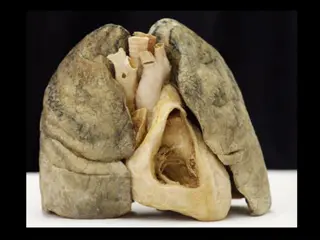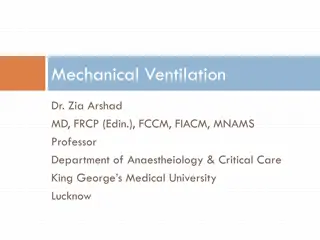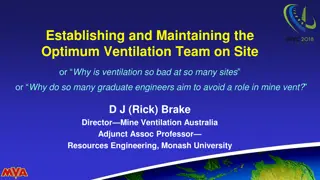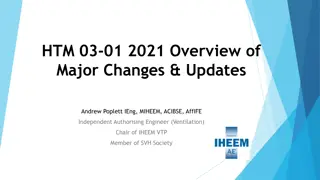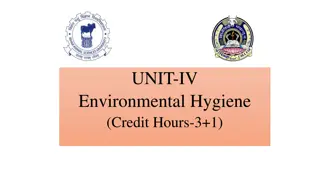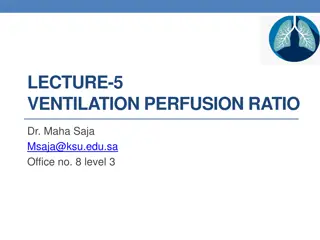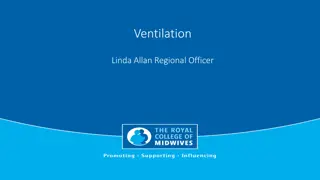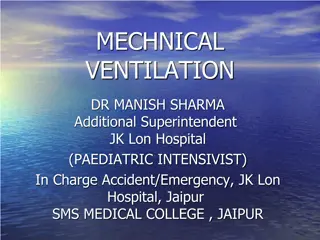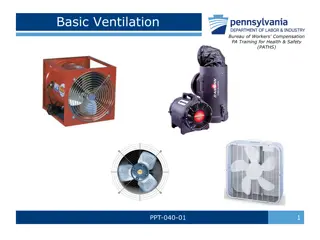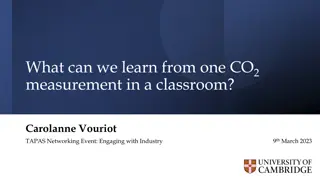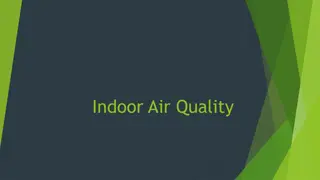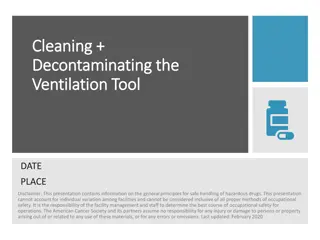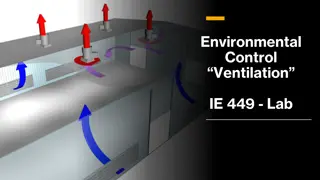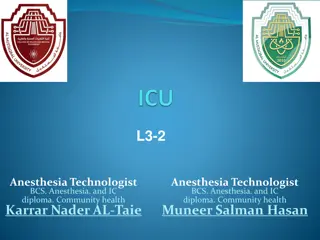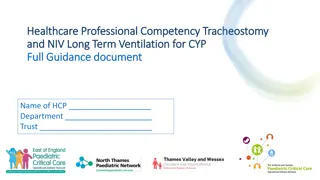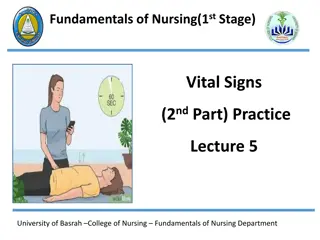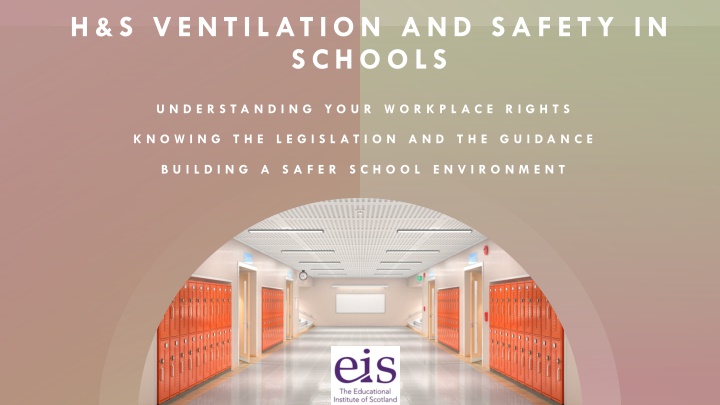
H&S Ventilation and Safety in Schools During Covid-19
Explore the importance of ventilation in schools during the Covid-19 pandemic, understanding legislation, guidance, and the role of H&S representatives. Learn about key legislation, risks assessments, and workplace safety regulations to ensure a safe school environment for all.
Download Presentation

Please find below an Image/Link to download the presentation.
The content on the website is provided AS IS for your information and personal use only. It may not be sold, licensed, or shared on other websites without obtaining consent from the author. If you encounter any issues during the download, it is possible that the publisher has removed the file from their server.
You are allowed to download the files provided on this website for personal or commercial use, subject to the condition that they are used lawfully. All files are the property of their respective owners.
The content on the website is provided AS IS for your information and personal use only. It may not be sold, licensed, or shared on other websites without obtaining consent from the author.
E N D
Presentation Transcript
H&S VENTILATION AND SAFETY IN SCHOOLS U N D E R S T A N D I N G Y O U R W O R K P L A C E R I G H T S K N O W I N G T H E L E G I S L A T I O N A N D T H E G U I D A N C E B U I L D I N G A S A F E R S C H O O L E N V I R O N M E N T
Introduction This session is aimed at helping school Reps to understand the H&S guidance around ventilation of schools in the context of working in the Covid-19 Pandemic. We will discuss implications and implementation of the guidance, legislation, and remedies. Understand the importance of collective response and trade union participation to underpin a safe working environment
It is very important to remember that there has been legislation covering H&S in situ for many years specifically covering the matter of ventilation in schools and surrounding matters. Do not be turned off by the fact that legislation sounds boring! Whilst it may not be a panacea for all H&S ills it gives you rights and legal recourse to ensuring that standards are met and maintained. It exists to bring those into line who do not meet these legal requirements. H&S Reps will be trained to be well versed in knowing the type of legislation that exists and are key to ensuring compliance. Get a School H&S Rep! L e g i s l a t i o n In the context on Covid and ventilation the most relevant pieces are:
T h e H e a l t h A n d S a f e t y A t W o r k A c t 1 9 7 4 , A n d A s s o c i a t e d R e g u l a t i o n s It is of vital importance that you are consulted as to the robustness and effectiveness of the updated risk assessment and ensuing plan. This updated risk assessment must be completed in the context of the revised guidance and return to full time education in schools. Your school rep must be consulted on the updated risk assessment prior to implementation. Your school rep should also facilitate branch consultation via a school meeting.
T h e W o r k p l a c e ( H e a l t h , S a f e t y A n d W e l f a r e ) R e g u l a t i o n 1 9 9 2 The ACOP guidance includes the following points: Regulation 6 Ventilation states: (1) Effective and suitable provision shall be made to ensure that every enclosed Air that is introduced should, as far as possible, be free of any impurity, which is likely to be offensive or cause ill health. Where necessary, the inlet air should be filtered to remove particulates. workplace is ventilated by a sufficient quantity of fresh or purified air. Where necessary, mechanical ventilation systems should be provided to part or all of the building. (2) Any plant used for the purpose of complying with paragraph (1) shall include an Occupants should not be exposed to uncomfortable draughts. effective device to give visible or audible warning of any failure of the plant where necessary for reasons of health or safety. The fresh air supply rate should not normally fall below 5 to 8 litres per second, per occupant.
T h e Wo r k p l a c e ( H e a l t h , S a f e t y A n d W e l f a r e ) Re g u l a t i o n 1 9 9 2 Regulation 7 on Temperature requires that during working hours, the temperature: shall be reasonable; and that excessive effects of sunlight on temperature shall be avoided. During working hours, the temperature in all workplaces inside buildings shall be reasonable. (2) A method of heating or cooling shall not be used which results in the escape into a workplace of fumes, gas or vapour of such character and to such extent that they are likely to be injurious or offensive to any person. (3) A sufficient number of thermometers shall be provided to enable persons at work to determine the temperature in any workplace inside a building.
Contd requires that temperatures shall be reasonable and the accompanying Approved Code of Practice defines this as normally at least 16 C (60 F) (para 43) during the length of time people are likely to be there (para 49). The School Premises (General Requirements and Standards) (Scotland) Regulations 1967 includes provisions for minimum temperatures in different areas within schools. They are on Page 52 of the EIS Health and Safety Handbook.
T H E M A N A G E M E N T O F H E A L T H A N D S A F E T Y A T W O R K R E G U L A T I O N S 1 9 9 9 ( T H E M A N A G E M E N T R E G U L A T I O N S ) . state that - your employer is obliged to provide you with a safe place of work through the use of a risk assessment. A risk assessment will allow you to identify hazards and risk factors that have the potential to cause harm. There are five steps in a risk assessment: Identify the hazards Decide who might be harmed and how Evaluate the risks and decide on precautions Record your significant findings Review your assessment and update if necessary B E C A U S E R E G U L A T I O N 3 C O V E R S T H E W H O L E C O T T A G E I N D U S T R Y O F R I S K A S S E S S M E N T .
Ventila tion - Introduction Why is ventilation so important? Aerosol Transmission Risk assessment and ventilation? Have the existing risk assessments been updated in line with the revised CERG guidance? Are heating & ventilation included in the revised risk assessments?
Ve n t i l a t i o n - I d e n t i f y i n g Po o r l y Ve n t i l a t e d A r e a s A n d U s i n g C O 2 M o n i t o r s The presence of natural ventilation such as open windows, doors, or vents? The presence of mechanical systems providing outdoor air, temperature control, or both? Areas that feel stuffy or smell bad? CO2 monitors? How to get the most accurate readings How the measurements can help you take action
V E N T I L AT I O N - A S S E S S M E N T O F F R E S H A I R ( V E N T I L AT I O N ) I N T H E W O R K P L AC E How many people use or occupy the area? The more people who use or occupy an area, the greater the risk that an infected person is there, increasing possible exposure to aerosol transmission. How large is the area? The larger the area, the lower the risk. What tasks or activities take place in the area?Activities that make you breathe deeper, for example physical exertion or shouting, will increase generation of aerosols and risk of transmission. Can some activities be moved outside or working alone where possible? Are there any features in the workplace that affect ventilation, e.g., large machinery, equipment, etc.? Do you use desk or ceiling fans? These shouldn t be used in poorly ventilated areas. Do any areas feel stuffy or smell unpleasant? Are there any areas of the premises without either natural ventilation, or mechanical ventilation?
Ve n t i l a t i o n - A s s e s s m e n t O f F r e s h A i r ( Ve n t i l a t i o n ) i n t h e Wo r k p l a c e Do windows open to allow fresh air to enter the workspace? Do ventilation grids appear dirty? Are any airbricks blocked? ? Do mechanical ventilation systems provide outdoor air, temperature control, or both? If a system only recirculates air and has no outdoor air supply, the area is likely to be poorly ventilated. Are ventilation facilities blocked by furniture or curtains? Are draughts avoided for those seated near windows and doors?
V E N T I L AT I O N - I M P ROV I N G N AT U R A L V E N T I L AT I O N 1 2 Purging (airing rooms) Natural ventilation Mechanical ventilation Talking to members about improving ventilation
Ve n t i l a t i o n H o w To I m p r o v e M e c h a n i c a l Ve n t i l a t i o n ( I n c l u d i n g A i r C o n d i t i o n i n g ) Maximising fresh air Recirculating air
V e n t i l a t i o n - B a l a n c i n g V e n t i l a t i o n w i t h K e e p i n g W o r k p l a c e T e m p e r a t u r e s C o m f o r t a b l e Regulation 7 of the Workplace Regs and School Premises (General Requirements and Standards) (Scotland) Regulations 1967 Assessment of heating requirements Is the temperature above the regulatory minimum? (16C) Is the temperature in workspaces regulated by thermostats? Are reasonable room temperatures maintained by the heating system at all times during the working day? Are sufficient numbers of thermometers provided? Are temperatures regularly monitored? Simple steps windows and doors partially open relax dress codes fan convector heaters if the area is well ventilated
Ventilation Ventilation
What we should be looking out for on ventilation as part of a Risk Assessment CO2 Monitors Notable if 800ppm should not exceed 1500ppm Air purges Open high vents Open doors The law states there must be an adequate supply of fresh air in enclosed areas of the workplace always! This control measure along with hygiene/ distancing/ masks should be identified in your RA Scotgov (July 21) A greater emphasis must be plaved on ventilation & Employers should continue to consult TU s All should have had CO2 monitoring in place by start of October Break Local Authorities RA s are a legal Requirement incl any reasonable mitigations to reduce the spread of Covid-19
Responding To Health And Saf ety As An EIS Br anch Convene EIS branch meetings - regular dialogue with members is key Establish a branch working group around H&S Identify members concerns Don t wait until a situation is at it s worst to take action. Put branch concerns in writing to the HT Update your LA Secretary If concerns are not being addressed then raise a formal grievance Raise a dispute-seek support of LA Secretary and Area Officer
B u i l d i n g E v i d e n c e Gathering concrete evidence of members concerns around health and safety will be central to challenging and addressing the issues. Always put concerns in writing, make them clear and include your expected resolution Keep a diary of steps taken by the rep and the branch Verbal conversations should be followed up by a written summary of the discussions Members surveys and feedback, forms the basis of concrete evidence and will strengthen your case A collective petition signed by members of the branch highlights the collective sense of feeling Visually document concerns where necessary
http://www.legislation.gov.uk/ https://www.eis.org.uk/Guidance-And-Information/ReduceCOVIDRisk https://www.eis.org.uk/Health-And-Safety-Advice/SchoolHeating R E F E R E N C E L I N K S - https://www.gov.scot/publications/coronavirus-covid-19-guidance-on- reducing-the-risks-in-schools/ https://www.gov.uk/government/news/new-campaign-to-stop-covid-19- hanging-around
WHAT ARE YOU HAPPY TO SETTLE FOR? We work in the environment we are happy to settle for. Come together to bargain for more. Organise together to settle only for your safety.

